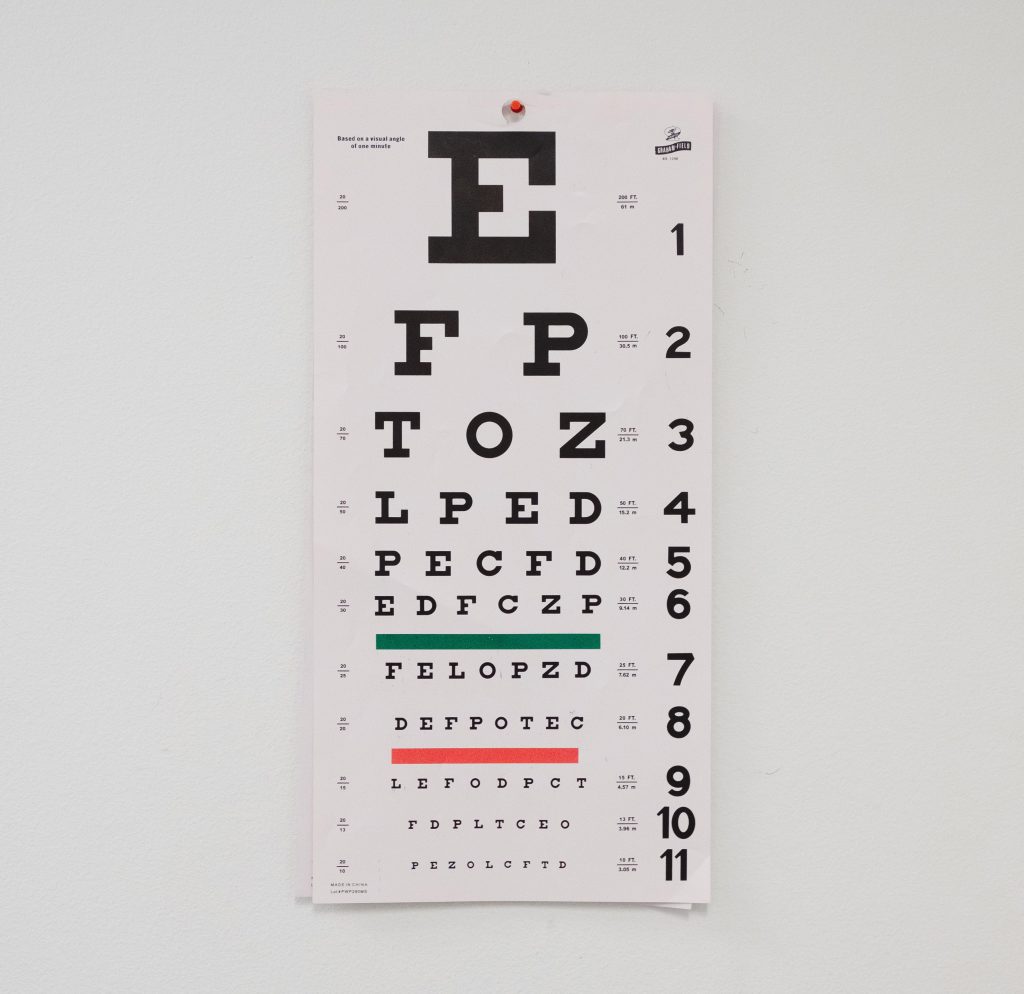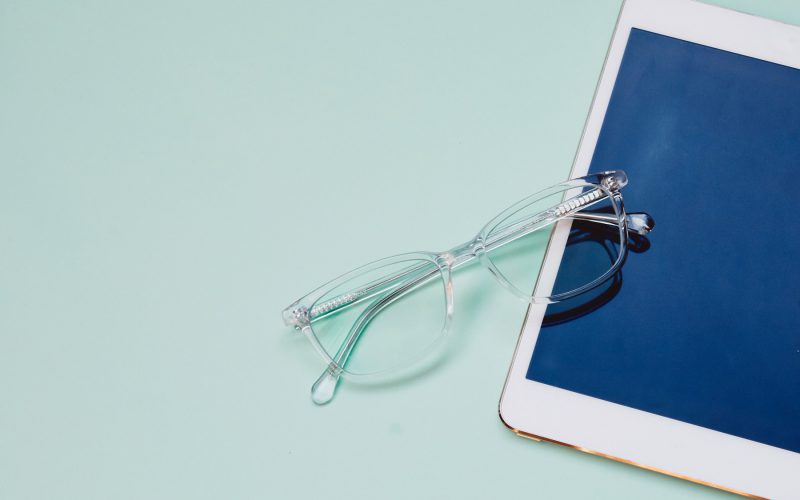In the age of smartphones and spending the day in front of monitors, being knowledgeable about eye health is particularly important. What is perfect eyesight? Is 20/20 perfect vision? As you head into the optometrist, you’ll need to know a few essential facts about vision so that you can work with them to stay on top of your eye health. Read on as we answer all of your perfect vision and eye health questions.
What is 20/20 Vision?
What is considered perfect vision? The first “20” in 20/20 vision is defined by how far away you’d stand from a standard eye chart, measured in feet. The second number is the distance at which someone with normal vision can read the same line on the chart. This is called a Snellen chart and is the standard used by optometrists. Someone with 20/20 vision will see on a Snellen chart what someone else with optimal vision will also see 20 feet away.
A nearsighted person might have 20/100 vision, which indicates that this person will see at 20 feet away what a normally sighted person will see at 100 feet away. A farsighted person may have 20/10 vision, indicating that a normally sighted person can see at 20 feet what they can see 10 feet away. This isn’t ideal by any stretch, as farsightedness also means that the person may have difficulty seeing what’s up close. Both nearsightedness and farsightedness need to be corrected.
Other factors that determine the answer to “what’s perfect vision?” include light sensitivity, depth perception, and the ability to perceive contrasts and shading.

How is 20/20 Vision Determined?
Without the help of an optometrist, it can be challenging to determine what is considered perfect vision, and when vision requires correction. It’s essential to visit the eye doctor and get an eye exam annually if you suspect you may need vision correction or if you already wear corrective lenses.
What Happens During an Eye Exam?
During an eye exam, a doctor will perform various tests including a glaucoma test, a refraction test, and an acuity test. After viewing the results of these tests, the eye doctor will either determine if you need glasses or if you need to change the strength of your eyeglass prescription. Typically, you can plan to spend about an hour getting your eye exam.
Keep in mind, if you’re under 40, you can get a regular eye exam every two years. Once you’re over the age of 40, it’s wise to get an eye exam yearly. However, even if you’re under 40 but require eyewear correction, you might also need to get an exam every year to keep up with your prescription.
Is Perfect Vision Common?
Only 35 percent of the world population possesses 20/20 vision, or perfect vision, without eyewear correction. This number increases to 75 percent with correction, which may include eyeglasses, contact lenses, and corrective surgery. The other 25 percent of the population has long term vision issues. “What is perfect eyesight?” is a question that is actually debated heavily among eye health professionals.
How Can Vision be Corrected to 20/20?
What is the best vision correction option? Most would agree corrective eyewear is the most straightforward and practical answer. Fortunately, corrective eyeglasses have existed for a long time. The very first eyeglasses appeared in Pisa, Italy, around 1290 AD. Eyeglasses were first mentioned in a Catholic sermon dated 1306. The first craft guild dedicated to the creation of eyewear appeared in 1301 AD in Pisa. American scientist and founding Father Benjamin Franklin invented bifocals as we know them today in the late 1700s.
Eyeglasses use convex lenses to focus light more accurately onto the retina so that visual nerve impulses can be sent to the brain for interpretation. In the case of myopia, also called nearsightedness, the visual image is focused in front of the cornea, while with hyperopia, or farsightedness, the image is focused behind the retina.
Another option is laser eye surgery, but this can only typically be applied to people who do not have greater eye issues. Eye surgery overseen by an ophthalmologist may be needed in the case of more extreme eye health issues, such as cornea health, extreme astigmatism, or cataracts. Long term exposure to computer monitors can also cause eye health problems, calling for Blue Light blocking lenses and UV coatings. Eye health is a complex subject, and the question “what is perfect vision?” is answered differently for each person.

How Felix Gray Can Help you Attain Perfect Vision
Felix Gray has been working for years in the field of eyewear and eye care. Do you want to correct your vision and look great doing it? Browse our selection of glasses, including those that correct computer vision syndrome, and reach out to us if you have any questions! We’d love to hear from you.
